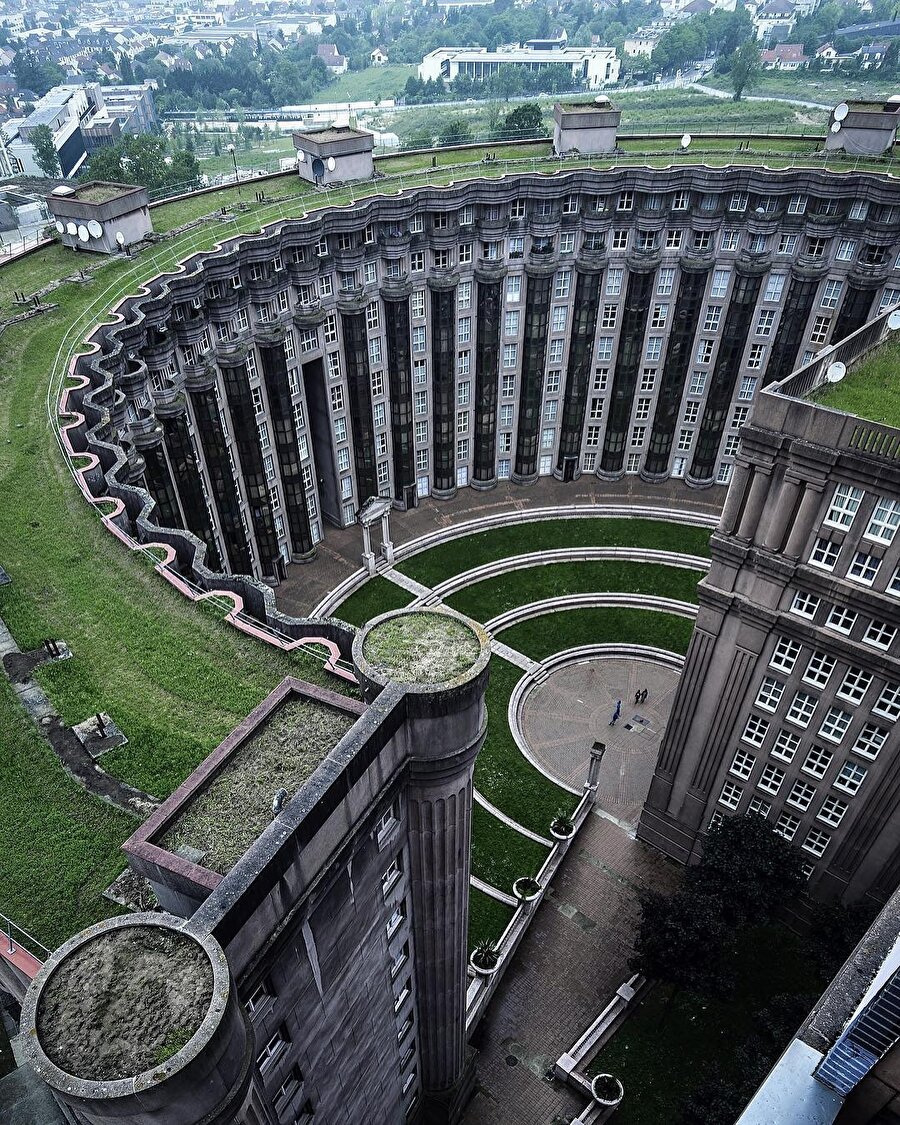Ricardo Bofill’in eşsiz yapısı: Les Espaces d'Abraxas
26 AĞUSTOS 2024 , PAZARTESİ 09:00

Les Espaces d'Abraxas, Paris'in doğusunda, Noisy-le-Grand bölgesinde yer alan postmodern bir konut kompleksi olup, İspanyol mimar Ricardo Bofill tarafından 1978-1983 yılları arasında inşa ediliyor. Bu mimari kompleks, Bofill'in sanatsal vizyonunu yansıtarak, klasik mimari unsurları modern malzemelerle harmanlıyor.
Kompleks, üç ana yapıdan oluşuyor: Le Théâtre, L'Arc ve Le Palacio. Bu yapılar, hem toplu konutların gereksinimlerine yanıt vermek hem de sanatsal bir mekân oluşturmak amacıyla tasarlanıyor. Mimari tarzı, abartılı süslemeleri ve geniş merdivenleri ile dikkat çekiyor.
Les Espaces d'Abraxas, yıllar içinde sinema ve televizyon prodüksiyonlarında da yer buluyor. Özellikle 2012 yapımı "Açlık Oyunları" (The Hunger Games) filminde Capitol'ün mimari bir sembolü olarak kullanılıyor. Bu yapılar, her ne kadar görkemli ve sanatsal olsa da, konut olarak kullanımı zaman içinde sorunlu hale geliyor ve çeşitli sosyal ve yapısal eleştiriler alıyor. Ancak, mimarinin estetik değeri ve Bofill'in vizyonu açısından önemli bir eser olarak kabul ediliyor.
📸 @jeroenvandam
----
Les Espaces d'Abraxas is a postmodern residential complex in the Noisy-le-Grand district, east of Paris, built between 1978 and 1983 by Spanish architect Ricardo Bofill. This architectural complex reflects Bofill's artistic vision, blending classical architectural elements with modern materials.
The complex consists of three main buildings: Le Théâtre, L'Arc and Le Palacio. They are designed both to respond to the needs of public housing and to create an artistic space. It stands out with its architectural style, extravagant decorations and wide staircases.
Over the years, Les Espaces d'Abraxas has also been featured in movie and television productions. Especially in the 2012 movie “The Hunger Games", it is used as an architectural symbol of the Capitol. As majestic and artistic as these buildings are, their use as residences has become problematic over time and has received various social and structural criticisms. However, it is considered an important work in terms of the aesthetic value of the architecture and Bofill's vision.


